Chinese New Year Cake – Niangao
When it comes to prepare the Chinese New Year food, we never miss dumpling, or niangao, also known as Chinese New Year cake, a kind of Chinese rice cake (Chinese Gao). I’ve got my nian gao for Chinese New Year 2026. And you? You can buy a nian gao from a Chinese wet market, super market, or an online store anywhere and it is cheap. Want to challenge making a niangao yourself? Here we also offer you the Chinese nian gao recipe, with ways to cook it, and serve it.
But before making and eating Chinese New Year cake, you probably would like to learn about its history, the stories behind niangao, and why do Chinese eat it during Lunar New Year. So read on.
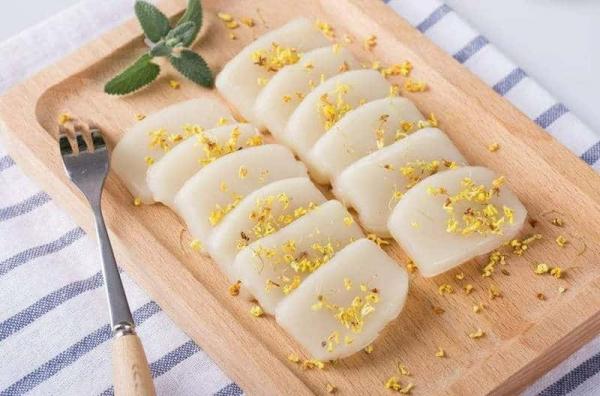
What is Chinese Niangao?
Nian gao (pronunciation: nián-gāo, in Chinese 年糕), literally Chinese New Year cake, is a traditional Chinese food of the Han nationality, and a seasonal food of the Lunar New Year. Nian gao is made from rice or glutinous rice. The rice was beaten or grounded by water, and then pressed into flour, before finally cooked into gao (cake). Today, for most places in China people still keep the Chinese New Year traditions of eating niangao.
Why Eat Niangao?
Chinese New Year food always carries auspicious meanings, let alone niangao, a must-eat during the 15-day Chinese New Year celebration, usually as breakfast. Traditionally, niagao comes in three colors, red, yellow and white, symbolizing gold and silver, the money and wealth. The Chinese New year cake is also called "Nian Nian Cake", which is homophonic with "higher one year after another", symbolizing that a child is getting taller every year, people’s wage get higher and higher, and their work and life are improved year by year. In short, it is believed that eating niangao in Lunar New Year will bring good luck.
Niangao History and Story
It is said that niangao was originally the sacrifices offered to the gods and ancestors during Spring Festival, and later became a common Chinese New Year food. In Han Dynasty, there was “gao” (糕) first recorded in history book, which later became very popular in Wei, Jin and Southern and Northern Dynasties. During the Ming and Qing Dynasties, niangao was a perennial snack on the market, with different flavors from the North and South.
It is said that niangao was spread far and wide from the capital of Wu Kingdom (now Suzhou in Jiangsu Province) During the Spring and Autumn Period and the Warring States Period. People often made niangao into the shape of "five blessings", "six treasures", "money", "ruyi" and so on, symbolizing "good luck" and “wealth”.
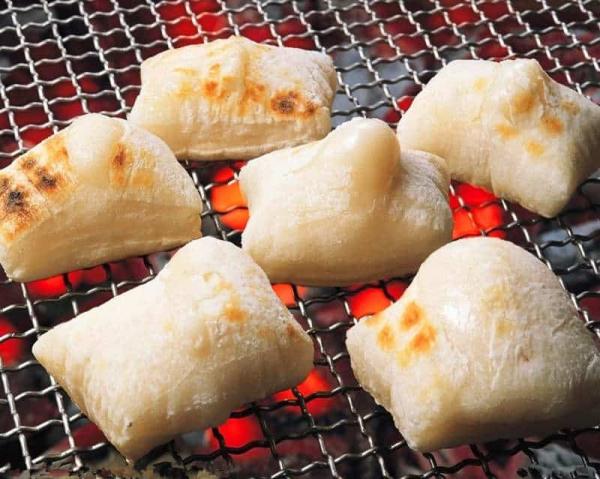
There is a famous story of nian gao. Legend has it that at the end of the Spring and Autumn Period, After Wu Zixu, prime minister of Wu Kingdom, committed suicide, King Goujian of Yue Kingdom led his troops to attack Wu and surrounded Gusu City, the capital of Wu. The Wu army was trapped in the city and there was no food. Women and children were crying in the streets. Many people in the city had starved to death. Then some of Wu Zishu’s subordinates suddenly remembered what Wu Zishu said before he died, "If the country is in trouble and the people are in need of food, go dig three feet under the city wall and get food.”
So they went to dig the city wall, for three feet deep, and found a lot of edible" bricks ", which was niangao. Finally Wu Kingdom won the war. It turned out that Wu Zixu, when he supervised the construction of the city wall of Gusu, had been ready to store up food against famine.
From then on, every family would make niangao for Lunar New Year, and ate it on Chinese New Year's Eve dinner in memory of Wu zixu.
Types of Niangao
The taste of niaogao varies from place to place. People in Beijing like to eat red dates niangao, fruit niangao and white niangao that are made of polished glutinous rice and millet. Hebei people like to add niangao with dates, red beans, and mung beans. In Inner Mongolia and some places in the northwest of Shanxi, it is customary to eat stir-fry Chinese New year cakes filled with bean paste and jujube paste. Shandong people steam niangao with yellow rice and red dates.
While Chinese New year cakes from the North China are usually sweet, steamed or fried, or simply dipped in sugar. Niangao in the South China can be both sweet and salty.
Niangao produced in Suzhou and Ningbo are made of japonica rice and has a light taste. In addition to be steamed and fried, niangao can also be sliced to be stir-fried or cooked in soup. The sweet niangao from the South China is made of glutinous rice flour mixed with white sugar, lard, rose, osmanthus flower, mint and vegetable paste. It can be steamed or fried with egg white.
The most famous Chinese Niangao include Suzhou niangao, Geyang Niaogao, Fuzhou Niangao, Taiwan Niangao, and Yunnan Mengzi Niangao.
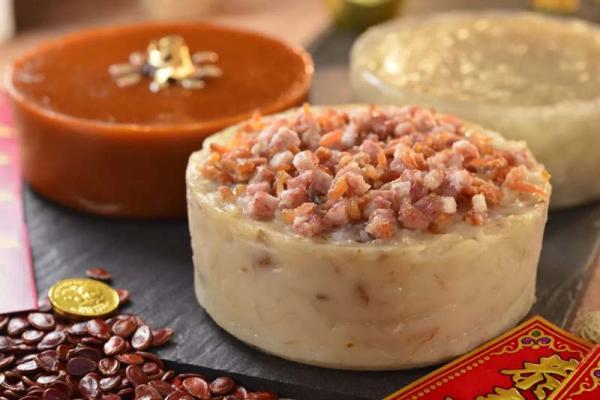
Niangao recipe – Ingredients & How to Make & Cook
Niangao is usually made of glutinous rice flour, which is a specialty of the south of the Yangtze River. In the north, sticky millet (commonly known as yellow rice) was first introduced in ancient times. This millet shelled powder, after steamed, is yellow, sticky, and sweet, and was the lucky food to celebrate the harvest in the North.
Experienced niangao makers say that the most important thing to make niangao is the use of water and oil. In addition, whether the glutinous rice flour is authentic also matters. Actually it is very easy to make niangao. It can be made in many flavors, but all of them are based on the basic original flavor of the cake with other favorite ingredients such as red dates. Below are some of the most popular niangao recipes, and some different ways to cook niangao and eat niangao, so that you can learn how to make niangao easily and quickly, and cook niangao into your favorite flavor.
Eight-Treasure Niangao (Sweet Niangao) Recipe
Ingredients: 1000 grams of glutinous rice, 20 grams of sugar, 20 grams of sesame seed, 20 grams of green plum, 20 grams of raisins, 20 grams of peach, 20 grams of white lotus
Step-by-step guide how to make sweet niangao:
Step 1, Wash 1000 grams of glutinous rice, submerge it in water for 24 hours and steam it in the drawer. Take it out and mash it with wooden sticks and leave it to cool.
Step 2, Mix well the prepared sugar, sesame seeds, green plums, raisins, dried peaches, white melon strips and white lotus to make the filling.
Step 3, Brush a layer of lard in a square plate, and line it with 1cm of pounded glutinous rice. Put the right amount of filling in each layer, totally three layers.
Step 4, After steaming, cut the cake into small pieces with a knife and serve.
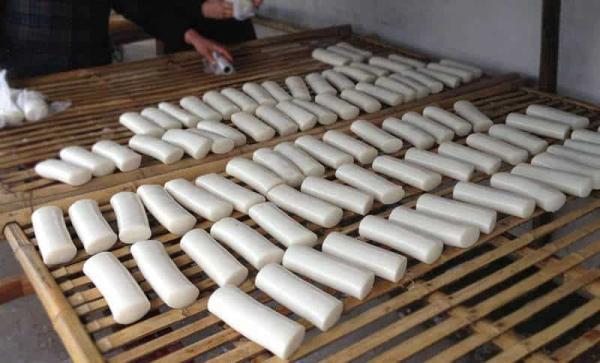
Sausage Niangao Recipe
Ingredients: sausages, niangao slices, green peppers, carrots, green onion
Step-by-step guide how to cook sausage niangao:
1. Slice all the raw materials.
2. Put a little oil in a wok, add green onion and fry until fragrant.
3. Add sausage.
4. Add niangao, and a little water, fry the rice cake until soft.
5. Add green pepper and carrot, stir-fry until done.
Fried Niangao Recipe
Ingredients: 1000 grams of glutinous rice, 250 grams of japonica rice, 50 grams of lard, 50 grams of sugar, 50 grams of osmanthus sauce, a little peanut oil.
Step-by-step guide how to make and cook fried niangao:
Step 1, Wash 1000 grams of glutinous rice and 250 grams of japonica rice, and then add water to grind slurry. Put into a cloth bag and press to remove excessive moisture.
Step 2, Put the grinded slurry into a bowl, add lard, sugar and osmanthus paste, and stir well.
Step 3, Brush the square plate with peanut oil, put the stirred flour into the plate and flatten it out. Steam it for about 30 minutes on a steamer.
Step 4, Cool and cut into cubes, then fry in peanut oil over medium heat until done.
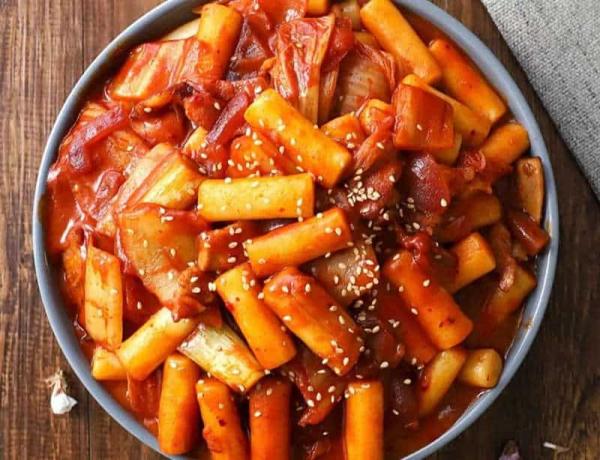
Red Bean Niangao Soup
Ingredients: 300 grams of red beans, niangao, appropriate amount of rock sugar and Osmanthus sugar.
Step-by-step guide how to cook Red Bean Niangao Soup:
Step 1: Soak the red beans for a few hours in advance, to make them easy to cook.
Step 2: Put the red beans in a pressure cooker and then pour some water into it. Next, cook until the beans are tender.
Step 3: Cut the niangao into thin slices.
Step 4: Spoon proper amount of niangao soup into pot, then put the niangao slices and rock sugar. Start cooking.
Step 5: Cook until niangao becomes soft and the rock sugar melts. Turn off the heat.
Step 6: Ladle them out, drizzle with a little sugar osmanthus and serve.
How to Store Niangao and Reheat Nian Gao?
Is nian gao unhealthy? Nian gao is a heathy food, but has several times more calories than rice, therefore should not eaten much at a time. For the rest of niangao, you need to store it properly, and reheat next time before eating.
It is normal for Chinese people to store nian gao in water. But remember to change the water and clean the nian gao every day, ensuring a longer storage time. If your Chinese New Year cake has been soaked in water without washing or changing the water, it will taste sour and should not be eaten.
In addition, after nian gao are washed with water, wrap each piece in a plastic bag and put it in the freezer. Take just what you can eat each time. This method can store niangao for a longer time.
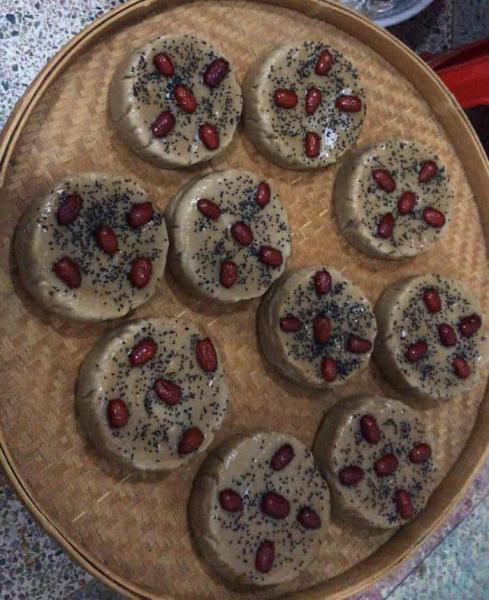
How long Can You Keep Nian Gao?
At room temperature: Rich in water and sugar, niangao is easy to breed bacteria and get mildewed. It can be stored for 3-5 days if the room temperature is below 15 degrees. If the temperature is higher than 15 degrees, it can only be stored for 2-3 days.
If being refrigerated: The low temperature of the refrigerator can inhibit the breeding and reproduction of bacteria, thus extend the preservation time of niangao to a certain extent, normally 5-10 days.
For international travelers, you are mostly welcomed to have a Chinese New Year tour, or enjoy a China food tour to taste Niangao and various traditional Chinese food.
Further Reading: